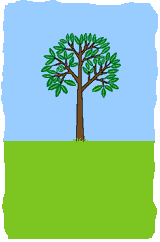口语Festival素材:Arbor Day(植树节)
文章作者 无名 发表时间 2004:12:06 06:07:16
来源 100Test.Com百考试题网
| Arbor Day (Day of Trees) |
| April 10 (the US, Canada, Australia...) |
 In many countries it has long been the tradition to hold an annual tree or forest festival. The origin of such celebrations dates back to antiquity and is in the dawn of religious feeling and awe for what trees represented. However, Arbor Day, as it is commonly known today, is of American origin and evolved from conditions peculiar to the Great Plains. It was first observed in Nebraska in 1872. In many countries it has long been the tradition to hold an annual tree or forest festival. The origin of such celebrations dates back to antiquity and is in the dawn of religious feeling and awe for what trees represented. However, Arbor Day, as it is commonly known today, is of American origin and evolved from conditions peculiar to the Great Plains. It was first observed in Nebraska in 1872.
The idea, conceived by J.S. Morton, then a member of the Nebraska State Board of Agriculture, was one of forest conservation. It was a move to promote replanting, following deforestation, and to plant up treeless areas. The idea has spread widely to other lands where it is variously celebrated as the Festival of Trees, Greening Week of Japan, The New Years Days of Trees in Israel, The Tree-loving Week of Korea, The Reforestation Week of Yugoslavia, The Students Afforestation Day of Iceland and The National Festival of Tree Planting in India. Arbor Day in its various forms is now recognised in more than fifty countries. THE IMPORTANCE OF ARBOR DAY On Arbor Day, particular attention is drawn to the part trees play in our lives. Its not just a day to plant trees and then forget the gesture for another twelve months. Planting a tree one day is no credit to us if, during the rest of the year, we neglect to care for it and those already growing. Our thought on Arbor Day should be an expression of enduring feeling, thought and action and not just one single, isolated flame of interest. In schools and other community groups, this day can be celebrated in many different ways. ·By planting trees or shrubs in school grounds, along neighbouring streets or in civic parks. |
相关文章
口语Festival素材:Shavuot(五旬节)
口语Festival素材:Queens Day in Holland(荷兰女王节)
口语Festival素材:Shakespeares Birthday(莎士比亚诞辰纪念日)
口语Festival素材:Earth Day(世界地球日)
口语Festival素材:Arbor Day(植树节)
口语Festival素材:Easter Day(复活节)
口语Festival素材:April Fools Day(愚人节)
口语Festival素材:St. Patricks Day(圣帕特里克节)
口语Festival素材:Mardi Gras(四旬斋前的狂欢节)
澳大利亚华人论坛
考好网
日本华人论坛
华人移民留学论坛
英国华人论坛